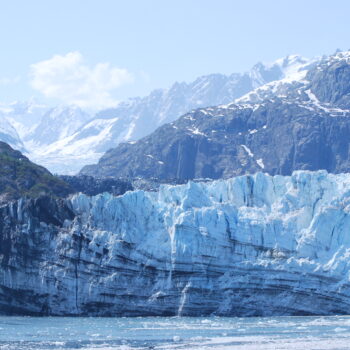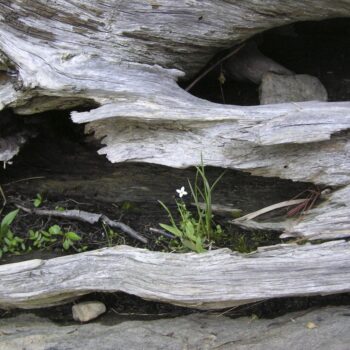
Learning into the Present II: Operating Complex Systems
Patterns can emerge through distal feedback into waves within the water—most notable with large bodies of water in which the forces of wind, storms, the moon, earthquakes and gravity can suddenly and forcefully create tidal waves that break through previously boundaries such as the shore. These fluid dynamic systems wreak havoc in chaotic fashion through towns, villages and cities. As climate change produces higher and higher sea levels, such events appear destined to increase—making the concept of a floating city quite relevant. This concept is something like the Buddhist notion of floating with rather than being rolled & crashed by waves, Floating cities might withstand rising seas in decades to come. This is much like our collective, second order learning and collaborative slow thinking about the mistaken building of rigid bridges. These “frozen” constructions tended to achieve harmonic resonance during windstorms and collapsed. “Fluid” buildings withstand earthquakes when allowed to roll with the earthen waves. Flexibility, not rigidity, is the order of the day when it comes to “wavey” states, especially those demonstrating turbulence.
Kayaking in a Turbulent Adaptive System: turbulence is not so clear when focusing on the earthly landscape, except where earthquakes are concerned. We do find clear and tangible evidence of turbulence in the air–and especially in aquatic environments. For example, one of us [JF] went kayaking recently with a dear friend on the Carquinez Straits delta near Benicia in Northern California. We do this every few weeks, yet it is never the same delta. As Heraclitus teaches us
“No [one] ever steps in the same river twice, for [they] are not the same [person] and the river is not the same river.” —-Heraclitus ~ 500BC
We have to time our trips to the tides & weather. Otherwise, we have to cross 200 meters of mud to get to the water. We do our best to launch and return on the back of high tide.
So, we often set out about 3 hours after low tide. On this particular day there was no wind and we hadn’t travelled up-the-delta for several sessions, so we decided together to go up-the-delta. We had assessed the static, warped plane of the delta. We combined that with our preferences and interests (our oscillations between pathways). Our decision was to pursue the valley-path toward the Benicia Bridge. Initial conditions all pointed to a calm and joyful trip for us both. Yet, we were not truly entering a static warped plane. Rather, we were engaging with a dynamic combination of rivers, tide, oceans, winds, and a very narrow strait with rigid shores that could change our experience at any moment. We usually like to have an easier time coming back, but the absence of wind and the calmness of water made those “turbulence” factors less powerful at that moment, so up-the-delta we went.
Oh, it was JOYOUS, we quickly realized the incoming tide was carrying us rapidly up-the-delta—overcoming the rivers force. At one point we noticed very odd turbulence—we engaged in a proximal assessment and as a result laughed and called it Atrial Fibrillation of the water, given its random, irregular pattern. The water tossed and churned in random ways without discernable waves (waves can tip a kayak very suddenly and must be traversed in a very specific way to avoid toppling over). At that time there was no real wind, only very choppy water. I made a note to myself “I think this random turbulence is the equal force of the river meeting with the force of the incoming tide and I haven’t seen that before….wonder which will be stronger on the way back?” I was recognizing dynamic processes yet was not moving that uncertainty into any kind of effective distal assessment or prediction about what was happening. We were rapidly heading toward the Bridge having extended very little effort and enjoying the unique, choppy water and absence of Oil Tankers (which create patterned waves as they pass).
- Posted by Bill Bergquist
- On March 19, 2024
- 0 Comment



Leave Reply